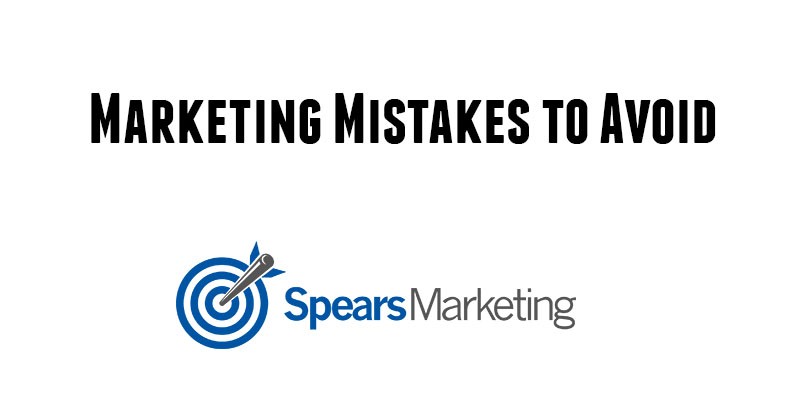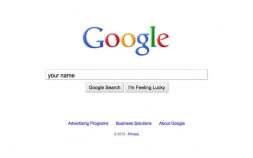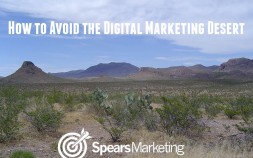In the last few years, the marketing landscape has changed drastically. This is primarily because of changes in buyer habits due to technology, such as broadband and wifi access, search engines, social media, and smart phones.
When it comes to marketing your product or service online, there are two options: jump in feet first as an early technology adopter, or sit back and wait to see if the new methods actually work for those crazy early adopters (your competitors).
Every business owner makes mistakes at one time or another, especially it seems, when it comes to marketing online. As a digital marketing strategist, I’ve seen my fair share of goof-ups, but there are four that seem to occur on a fairly regular basis.
How to Avoid the Top 4 Online Marketing Mistakes
As a digital marketing strategist, I’ve seen thousands of marketing mistakes over the years, usually made out of ignorance. With a little advance planning, most mistakes could be avoided and would save small business owners thousands of dollars, and more importantly, hours of time.
Poor Website Design, Structure, & Content
In the rush to get their business online, many small business owners throw up a website as quickly as possible, but neglect the three most important aspects of any site: visually appealing design, ease of navigation, and quality content.
Your website is a direct extension of your business. It’s highly likely that your site is the first thing a potential customer will see when deciding to do business with you. You never get a second chance to make a first impression, so what kind of impression is your site leaving with potential customers?
Design: Your business website should not look like it was created on Frontpage 10 years ago, but needs to reflect today’s web standards and capabilities.
Structure: It needs to be easy to navigate, so that visitors have a consistent experience on every page of your site. If I go to your site and have to click the “back” button to return to the homepage, I’m more likely to click the “x” button, and visit your competitor’s site instead.
Content: The information presented needs to be what potential customers are looking for. Who you are, what you do, the products/services offered, and how to contact you.
Without all of these aspects in place, you are giving a negative first impression to potential customers, and probably losing business.
Lack of Basic Search Engine Optimization
The way most people use the web is to go to Google, type in the keyword or phrase they’re looking for, and click on the first result. Even if they know the URL of a business they’re interested in, many will still let Google do the work for them, instead of simply typing it in the address bar. Because of this, every website MUST have some basic on-site search engine optimization.
The single most important aspect of SEO (search engine optimization) is the title tag, what you see at the top of your browser when you are on a particular webpage. The title tag tells Google what that particular page is about.
If the title tag of your homepage says “home” your site does not have optimized title tags! (If you’re not in the ‘home’ industry, you probably don’t want to rank for that term.) At the very minimum, each page on your site should have a specific title tag that includes the keywords or phrase(s) a potential customer would most likely search for that is related to that page.
Secondly, each page of your site must have a specific meta description. This is the information that Google (or any other search engine used) will show below the link to your site in the search results. Without it, the big G will pull whatever information it feels is most relevant to the page, without your input. Since you know your business, it’s probably a good idea for you decide what info you want to show up.
Get these two elements correctly in place, and your site will rank much higher for your business/industry keywords.
Using Social Media as a Broadcast Medium
The web has changed marketing. No longer can you simply broadcast your message to the masses and hope your intended customer will see/hear/respond to it. Social media has fundamentally changed all that. Now, past, current, and future customers have a way to communicate with you.
If you have a Facebook page for your business, yet don’t allow comments on the wall for fear of what someone might say, you’re using Facebook to broadcast. If you tweet out a daily special or promotion, yet never follow anyone back or check your mentions and reply back, you’re using Twitter to broadcast.
Social media is a dialog, not a monologue. It’s (should be) a back and forth conversation between you and your customer (or future customer). If that scares you, good! It means you’ll work harder to provide a valuable product or service. It also means that customers will be choosing to do business with those who listen to them, rather than just advertise at them.
Social media is a three-spoked wheel, one-part marketing, one-part public relations, and one-part customer service. Treat it like such and your customers will love and thank you!
Lack of Consistency
Your web presence can be one of your biggest marketing assets, but the key is consistency. Just like any other area of business, you have to set expectations and live up to them.
If your website has a blog, update it regularly. Whether that is once a month, once a week, or every day, be sure to keep it consistent, as your visitors will have an expectation, and if that expectation isn’t met, they’ll begin looking somewhere else for what you offer. If you can only spend an hour each day from 4:00-5:00 PM on social media, that’s fine, but set the expectation upfront and live up to it.
If a new customer came to your place of business and you had 4th of July sale signs prominently displayed (in August), they’re probably not going to take your business very seriously, no matter what your excuse. The same holds true with your web presence.
Keep your website updated. Be consistent in your social media usage. Treat it as another aspect of your regular business activities and your customers will get to know, like, trust, and buy from you regularly!
Which of these digital marketing mistakes are you most guilty of and what steps are you taking to correct them?


